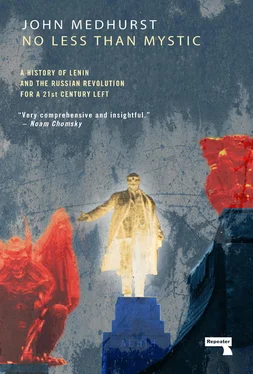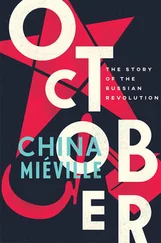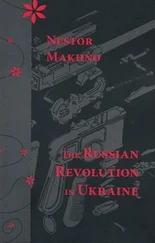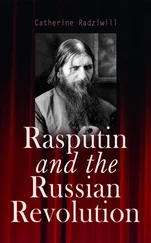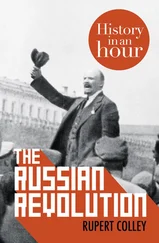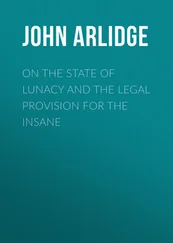The Red Terror was a stain on Russian socialism and Russian socialists knew it. The legendary anarchist Peter Kropotkin wrote in 1919, “To throw the country into a red terror, even more so to arrest hostages in order to protect the lives of its leaders, is not worthy of a socialist party and disgraceful for its leaders”. It was not only Mensheviks and anarchists who condemned the terror. Many Bolsheviks and Bolshevik sympathisers were disgusted with what they saw as a great perversion of the socialist ideal. The Bolshevik engineer and social entrepreneur Leonard Krassin, who had supported Lenin since 1903 and in 1920 would become People’s Commissar of Foreign Trade, wrote to his wife in late 1918 that after the attempted assassination of Lenin
about 600 to 700 persons were shot in Moscow and Petrograd, none-tenths of them having been arrested quite at random or merely on suspicion of belonging to the right wing of the Socialist Revolutionaries. In the provinces this developed in to a series of revolting incidents, such as arrests and mass executions. 12
The Italian communist Angelica Balabanov protested personally to Lenin about Cheka executions she had witnessed in Ukraine, to no avail.
Before she was murdered in 1919 by right-wing thugs, Rosa Luxemburg became a fierce if subtle critic of Lenin’s regime. In her essay “The Russian Revolution” (1918), she made clear that she supported a socialist revolution based on the leading role of the Soviets. Nor did she disguise her admiration for the Bolshevik Party which, unlike others, had dared , had given a lead to an international proletariat that had then “betrayed” them. Of the pre-October period she wrote, “The party of Lenin was thus the only one in Russia which grasped the true interest of the revolution in that first period”.
But her doubts about the Bolsheviks were contained even in her praise. On the issue of democracy Luxemburg eviscerated Lenin and Trotsky, pointing out that Trotsky’s critique of what he called “the cumbersome mechanism of democratic institutions” led logically to the suppression of all democratic institutions in which the mass of people were represented. Finally, she criticised the Bolsheviks’ denial of press and political freedom in words that, had they been written in Russia, would have seen her arrested. “Freedom only for the supporters of the government, only for the members of one party–however numerous they may be–is no freedom at all”, she wrote. “Freedom is always and exclusively freedom for the one who thinks differently”. 13Luxemburg never saw the full development of the Red Terror, but had she lived it is certain she would have condemned it.
The White Terror was equally as savage. After a desultory attempt to present a democratic political face to the world through alliances with Kadets such as Milukov and Struve, to whom they rarely listened, the Whites quickly reverted to type–a mix of Imperial military, dispossessed landowners, sons of the aristocracy and the provincial mercantile bourgeoisie, holding together armies made up of Cossacks, peasants and nationalists. Led by ex-Imperial officers such as Krasnov, Kolchak, Yudenich and Denikin, they had no specific political programme except a vague return to the status quo ante before October 1917. For some this meant a bourgeois constitutional regime, for others a restoration of monarchy and the old order in the countryside. They had a fierce loathing for those they held responsible for the revolution and the dispossession of their families’ property and wealth, i.e. any and all leftists and intellectuals, most especially the Jews, who for them epitomised the urban cosmopolitanism of the intelligentsia. As the White armies advanced and retook cities held by Red Guards and run by Soviets they took their revenge.
The Manchester Guardian ’s correspondent reported the fate of those taken prisoner by the Whites. “When questioned on the subject”, he reported, “the White officers always said ‘Oh, we kill all of them that are Communists’. Jews and Commissars stood no chance, of course”. 14Often just being working-class was enough. Krasnov’s Volunteer Army in the Don is estimated to have killed 45,000 civilians during its occupation of the province. When White forces retook Finland from the Red Army in October 1918, over 30,000 workers were summarily executed in a few days in a paroxysm of pure class rage, and some estimate that the eventual death toll was nearly 100,000. Across the waters of the Gulf of Finland, in besieged Petrograd, the message was heard loud and clear.
In June 1919 White forces were nearing Petrograd. Victor Serge, a man of fine literary and political sensitivities who later stood bravely against Stalin, wrote in his diary,
It is kill or be killed. I know very well that if the Whites enter the city all those who are dear to me can expect no mercy. Everyone knows this as well as I do. The air is permeated with a vague smell of blood, creating among us a state of mind in which terror cannot fail to grow. 15
White Terror also targeted the Jews, especially in Ukraine. Denikin’s army, loaded with Cossack officers, was viciously anti-Semitic, convinced–as were many Russians of all political persuasions–that the Bolshevik Party was led primarily by Jews (Trotsky was always called “Bronstein” by the White press and he was blamed personally for the murder of the Tsar and the persecution of the Orthodox Church).
When the Whites entered Kiev in October 1919 they carried out a mass pogrom of its Jewish citizens. “We reacted to the Yids just as the Bolsheviks reacted to the burzhoois ”, admitted the right-wing anti-Semite V.V. Shulgin. “They shouted ‘Death to the Burzhoois!’ And we shouted ‘Death to the Yids!’” 16White and Cossack forces often demanded vast payments from Jewish shopkeepers or small merchants in the belief they were rich, taking family members as hostages. When the demands could not be met the hostages were killed (the Bolsheviks did much the same, but in their case because the Jewish middle class was deemed “bourgeois” and hence counter-revolutionary). As the White armies began to fall back from Red counter-attack in 1919-20, they unleashed orgies of violence against the Jewish populations of towns they passed through. In one Ukrainian town, Fastov, Denikin’s men murdered over 1,500 Jews, mostly old men, women and children. Estimates of the total number of Jewish deaths in the Russian Civil War are as high as 150,000, the vast majority killed by the Whites.
The Red and White Terrors were not military operations. They were the targeting of entire social groups to achieve wider political aims or simply to satisfy sectarian bigotry. Of the Red Terror Tony Cliff wrote, “The revolutionary terror, like its predecessor in France during its great revolution, was a reaction to foreign invasion and the immensity of the threat to the revolution”. 17This is untrue. The White Terror was a slaughter that, as far as can be determined, easily matched that of the Cheka, but the use of revolutionary terror by the Bolsheviks did not follow the outbreak of the war and was not simply a reaction to it. It intensified in reaction to the clear intentions of the Whites to exterminate the Bolshevik regime and its supporters, but it began in 1917 with the creation of the Cheka and escalated in early 1918 when the Soviets began to elect non-Bolshevik majorities.
The inability of Leninists to openly recognise or condemn political terror was a road to hell, trod even by principled and humane Bolsheviks like Anatoly Lunacharsky, Alexandra Kollontai and Nikolai Bukharin. Unlike Lenin, they did not wallow in macho postures of being “merciless” and “hard”, but they supplied intellectual justification to the economic coercion that was an integral part of the Terror and which came to be known as “War Communism”. Initially this arose from the urgent need to feed the cities, most especially Moscow and Petrograd. Although the industrial regions of northern Russia remained in Bolshevik hands, they had less and less fuel and food. The cities of northern and central Russia had always depended on the Don Basin for coal, the Urals for iron and Baku for oil. All these were now inaccessible.
Читать дальше
